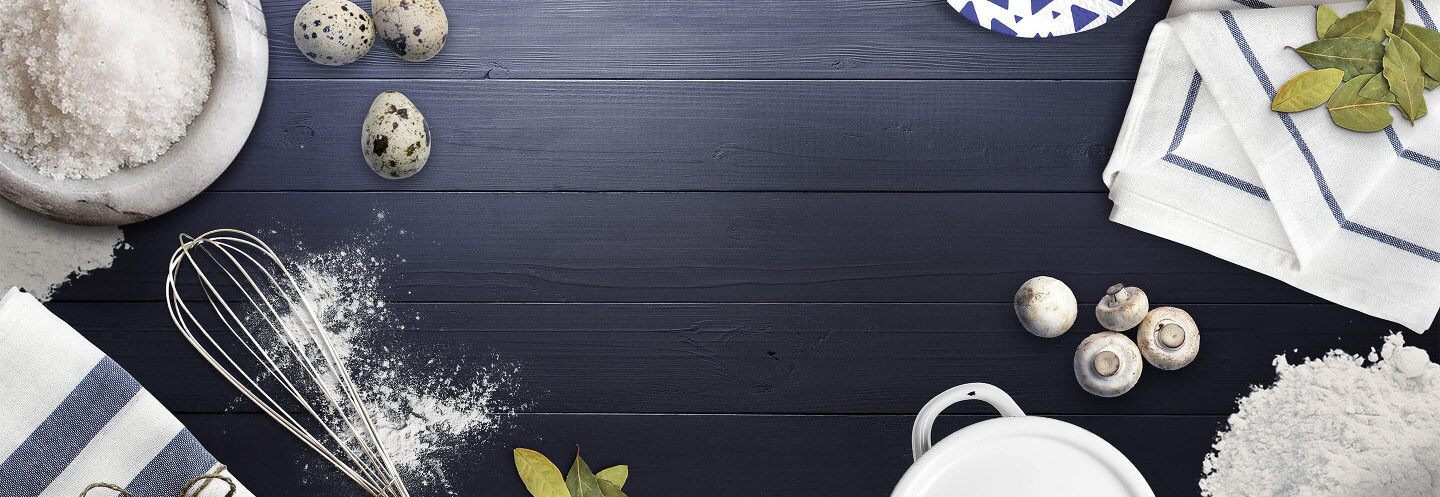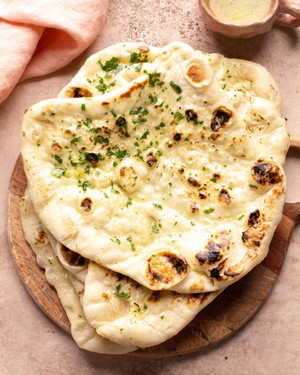https://www.copymethat.com/r/yhJdpzbEo/butter-naan/
139012638
M3CJ0zI
yhJdpzbEo
2024-11-14 22:25:05
Butter Naan
loading...
X
Butter naan is traditional Indian Naan bread brushed with melted butter after cooking. You can add some minced cilantro (coriander) leaves or minced garlic to make garlic butter naan.
It is a yeasted dough rolled into flatbreads and cooked traditionally in tandoor clay. My workaround makes it super easy to create that tandoori flavor and look in a cast iron skillet on the stovetop.
The combination of yeast and yogurt give this recipe a complex, delicious bread flavor similar to sourdough naan without needing a sourdough starter.
It puffs up on the pan (or tawa, in India) and those charred spots are irresistible. For an even more dramatic puffing up, see my notes in the recipe for finishing the naan over a direct flame (only works if you have a gas stove).
It is a yeasted dough rolled into flatbreads and cooked traditionally in tandoor clay. My workaround makes it super easy to create that tandoori flavor and look in a cast iron skillet on the stovetop.
The combination of yeast and yogurt give this recipe a complex, delicious bread flavor similar to sourdough naan without needing a sourdough starter.
It puffs up on the pan (or tawa, in India) and those charred spots are irresistible. For an even more dramatic puffing up, see my notes in the recipe for finishing the naan over a direct flame (only works if you have a gas stove).
Servings: 8
Servings: 8
Ingredients
- 4 cups all-purpose flour
- 1 tbsp instant dry yeast
- 2 tsp kosher salt
- ½ tsp baking soda
- 1 tsp baking powder
- ¾ cup plain yogurt or buttermilk
- 1 cup warm water see note
- 4 tbsp butter melted
- 1 tbsp minced cilantro
Steps
- Combine flour, yeast, salt, baking soda and baking powder in a stand mixer fitted with the paddle attachment and beat on low speed to combine.
- Add yogurt and water to the mixer bowl. Starting on low speed, beat until the mixture forms a shaggy dough, then switch to the hook attachment and knead for 4 minutes on medium-low speed. It may look very sticky at first but will come together as it kneads (don't add more flour).
- Generously flour a work surface. Dump out the dough and sprinkle it with flour, too. Knead once or twice to form a large ball. Cut the dough into 8 equal pieces and form each piece into a ball by rolling the dough between your hands.
- The dough is still quite sticky at this point, but you can work with it. Dampen your hands to make it easier.
- If the dough is impossibly sticky, add more flour.
- Oil a sheet of parchment paper. Place dough balls on top and roll them around to coat with oil. Cover with another sheet of parchment paper and let rise 1 hour.
- (See notes in post about making dough in advance.)
- Flour a work surface. Use a rolling pin to roll each dough ball flat to about ¼” thick, if not slightly thinner. Lightly flour dough as needed.
- Lift the dough off the counter and use your hands to gently pull it into a thinner, slightly oblong shape. Let it rest 10 minutes in a single layer.
- Meanwhile, preheat a cast iron pan for 5 minutes on medium-high heat. You’ll know it’s hot enough when you sprinkle it with water and it beads and evaporates immediately.
- Add one naan to the pan. Cover the pan and cook until bubbles start to grow on the top of the naan (about 30 to 60 seconds).
- Flip and cook on the other side until the dough loses its shiny, raw look and starts charring in spots (about 30 seconds more). For more dramatic puffing up and charring (like authentic tandoori-style naan), see notes below for instructions on finishing the naan over a direct flame.
- As naan breads are cooked, transfer them to a plate and cover with a towel to keep warm.
- Melt the butter and stir in cilantro, if using. Immediately brush the butter over warm naan (this seals the moisture into the hot bread and ensures softness).
Notes
- The dough is supposed to be quite sticky after kneading. Wet your hands with water to handle it, generously flour the work surface, and oil the dough balls on top and bottom before letting them rise. If the dough is too sticky to handle, gently knead more flour into it. Be sure to let it rest for 1 hour if you work the dough.
- Note on measuring flour: if you own a kitchen scale, please use it and weigh your flour. It’s always more accurate than using volume-based measuring cups, where flour can compact down and give you too much.
- Hand-mixing option: If you don’t have a stand mixer, you can easily make butter naan by hand. Stir together the dry ingredients in a bowl. Add the yogurt and water and stir with a wooden spoon to form a shaggy dough, then turn it out onto a clean, floured work surface and knead by hand until a smooth dough forms (about 10 minutes).
- Direct flame variation: If you have a gas stove, you can make the naan even more like tandoori naan. This is my preferred method (but not everyone has a gas stove so I simplified the recipe for you).
- To cook over the flame, after you flip the naan over, cook the underside for only 5 to 10 seconds to seal the surface so it is no longer sticky. Then use tongs to carefully move the naan over to a lit burner.
- Place the naan (still second side facing down) directly on the grate with the flame beneath it on high heat. The naan will often puff dramatically. Cook until charred spots appear on the underside (it only takes seconds), then transfer it to a plate and cover with a towel to keep warm. Never walk away or multi-task during this part as the naan can burn quickly.
- How hot should the water be? The ideal range is 120°-130°F. Warmer and it will kill the yeast. Colder and the dough will be slower to rise.
- As you’re cooking, the pan may get too hot. If naan starts to char on the bottom before bubbles form, turn the heat down for a minute before proceeding with the next one.
- NO oil or butter should be used in the pan. As long as the pan is properly preheated, the dough will never stick.
- Let the dough rest for 10 minutes after rolling to ensure bubbles. If you don’t, the gluten will be tight again from just working it. The dough will shrink in the pan and won’t have the soft texture need to stretch upwards as the moisture turns to steam.




